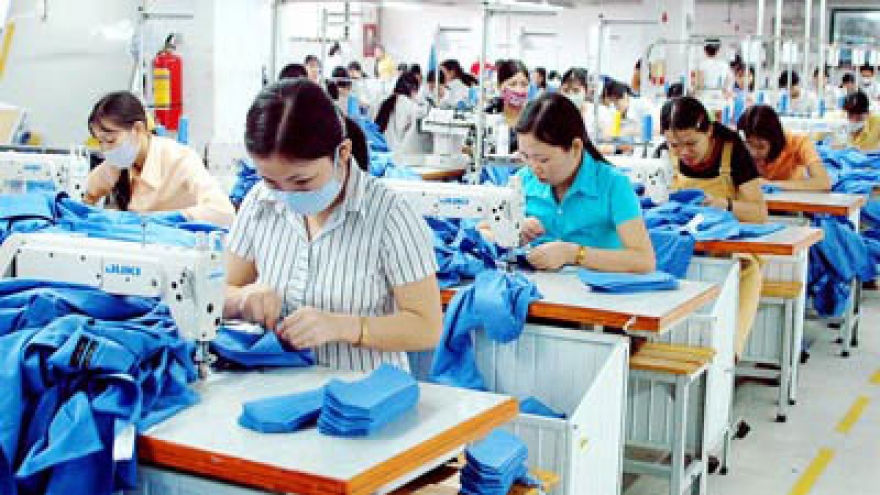Vietnam buckles down to build its local clothing industry
VOV.VN - The government is intent on ensuring that local companies in the clothing and textiles industries benefit from opportunities created by free trade agreements (FTAs), says the Vietnam Textile and Garment Association (VITAS).
Vietnam, already the world's fourth largest clothing exporter, stands to gain from preferential access to 28 EU member markets under the EU-Vietnam FTA, said VITAS Deputy General Director Hoang Ve Dung.
In addition, if the US led Trans Pacific Partnership (TPP) is ratified, the nation will benefit from further favoured access to markets of the other 11 countries to-date that have signed onto it.
The World Bank (WB) has estimated that the TPP deal alone could stimulate Vietnam's exports on everything from clothing to seafood by as much as 30% and propel the gross domestic product (GDP) growth rate by 10% over the next 15 years.
The TPP still needs to be ratified in the US and several other countries, which will delay giving it effect until – at a minimum – next year, while the EU-Vietnam FTA trade accord will take seven years before tariffs on clothing exports to Europe are completely removed.
 |
Only two out of the 10 are interested in developing the local supply chain Dung said, and those are primarily Chinese apparel and textile companies who understand the local culture and are coming across the border to benefit from FTAs.
According to Dung, the TPP has strict ‘rules of origin’ preconditions that mean clothing made in Vietnam from fabric sourced from countries like China that are not a party to the agreement will not be eligible for preferential access.
This accounts for the Chinese interest in Vietnam, particularly in the clothing and textile industries, but other than the Chinese, most other foreign companies have expressed scant interest, said Dung.
Even Vietnamese companies such as Vinatex, the country's largest textile producer, are indifferent to developing locally owned companies as it signed deals to produce its needs for fabric and dyes utilizing Japanese owned companies in early last year.
Meanwhile multinational companies based out of the Republic of Korea and Taiwan are swarming across the border attempting to capture the lion’s share of the supporting industry for the clothing industry in Vietnam, said Dung.
They are establishing businesses in the more developed metropolitan areas and industrial zones – not to produce apparel for export – but to produce textiles and fabrics for clothing exporters, which leaves locally owned companies out of the loop.
Dung said, the government plans to invest heavily over the next 10 years to fund capital investment and other costs, so that Vietnamese companies can meet global standards and join the supply chains of multinational manufacturers.
Vietnam's first industrial complex, called Hiep Phuoc Industrial Park, specializing in parts and materials produced by locally owned companies is set to open in Ho Chi Minh City by the end of the year.
The goal is to supply apparel companies (along with other manufacturers) with high quality product produced locally. Priority products include sewing-related items such as twisted yarn and synthetic fibre, along with shoes, leather, automotive parts and electronic components.


